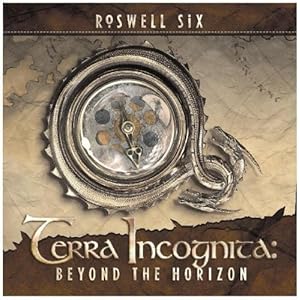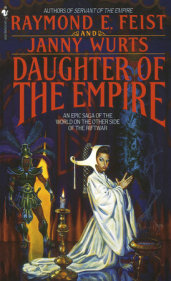I just realized I have not posted many book reviews penned prior to the inception of my WordPress blog (circa October 2010). After reading the recent announcement from Tor that Brandon Sanderson, one of my top ten favorite authors, had won the David Gemmell Legend Award for Best Novel, I felt the need to post my review, from August 2010, of the winning novel: The Way of Kings.
Update: Brandon posted about winning the award (he actually had two novels in the running) and traveling in Europe at his blog.
The Way of Kings by Brandon Sanderson
My rating: 4 of 5 stars
 The initial installment of the Stormlight Archives epic fantasy series stormed through my early September. Filled with the whispering wind of world building, the clatter and clamour of conflicted and conniving characters, the fermenting furor and flustering foreshadowing all building to a thundering tumultuous tempest that is yet the calm before the impending Everstorm.
The initial installment of the Stormlight Archives epic fantasy series stormed through my early September. Filled with the whispering wind of world building, the clatter and clamour of conflicted and conniving characters, the fermenting furor and flustering foreshadowing all building to a thundering tumultuous tempest that is yet the calm before the impending Everstorm.
Sanderson built a world far removed from our own, a rocky seemingly barren continent repeatedly ravaged by highstorms that routinely pummel the landscape and settlements with boulders and anything else it can find to hurl westward (or leeward, as highstorms always originate from the east). Plant and animal life adapted to this harsh environment by developing tough skins (exoskeletons are the norm here) and defensive mechanisms (prehensile plants that retract into their shells when approached or threatened). Humans build in caves, crevasses or very sturdy stone buildings, always facing leeward, with slanting roofs and sides to channel the wind from the highstorms over and around the structures.
Stormlight forms the foundation for the magic systems introduced and ironically is renewed or originates from the highstorms. Gems, like diamonds, garnets, topazes and emeralds, are infused with stormlight if left outside during a highstorm. The currency of the monetary system includes tiny chips of gems imbedded in spheres of glass and double as lamps, torches and other light sources. For those lucky enough to be magic wielders, the spheres also provide a ready reserve of energy for Lashing or Soulcasting. Having previously read Sanderson’s Mistborn series, I can’t say I wasn’t a little disappointed in the Lashing magic system, for it’s similarity to Allomancy (at least from a physics point-of-view).
Through several characters, who just happen to be scholars, we learn some of the history, philosophy, mythology, anthropology and religion of Roshar. Vorinism is the dominant religion of the times, but we see glimpses of how different it may have been in the distant past, especially when most history is written by the conquerors or the last man standing. Prejudice and some persecution persist, based on people’s eye color (current elite of society have light colored eyes, as opposed to the lowly darkeyes) and slavery is common, although slaves receive reduced wages in most cases. The most perplexing unanswered question stemmed from women covering their left hands (referred to as their safehands) for modesty’s sake. Not being genitalia, I wasn’t sure why a left hand (as opposed to a right hand) would evoke lust or some other unseemly immodest emotion in men. But, I’m not judging, just curious, as there are many examples from our own world of strange gender customs and modesty mores.
I related to and enjoyed many of the characters, especially Kaladin (heroic surgeon/spearman/slave/savior – this book focuses most on this character), Szeth (reluctant assassin), Dalinar (noble war leader tortured by visions during highstorms) and Wit (lives up to his name). Strangely, for the first time while reading a novel by Sanderson, I didn’t connect well with the female characters: Josnah (a heretic and devoted researcher/scholar) and Shallan (Josnah’s ward/student with a secret scarred past and a secret ulterior motive).
Sanderson excels at action sequences, vividly portraying amazing feats of magic, thrilling fight scenes and stunning battle sequences. At times, I forgot I was reading, becoming completely absorbed in what looked and felt like a spectacular cinematic experience. Hollywood screenwriters and directors could definitely learn something from Brandon Sanderson.
The ending left enough unanswered questions and new revelations to make me cringe at the two to three year wait for the second novel. I can’t say I was ‘happy’ with some of the discoveries, especially Dalinar’s final vision (actually a repeat of his first vision but our first glimpse of it). I would love to expound on this and rant a bit about the religious or philosophical repercussions, but I fear spoiling a key element and don’t want to scare prospective readers away from a magnificent epic fantasy.
I appreciated Kalladin’s struggles and triumphs, yet he has much to learn and finally has the resources and encouragement to achieve Life before Death, Strength before Weakness and the Journey before the Destination.
September 16th Addition: Brandon commissioned (and personally paid for) beautiful interior illustrations, color endplates of glyphs and maps, natural history sketchbook excerpts, various military maps all presented as character created to complement his excellent textual world building.
Here are some photos I took of the end plates from my first edition:


And finally, to top off the interior artwork, Michael Whelan created the stunning coverart (Click here for the artist’s notes on creating the cover artwork).
GR Status Updates:
 Over at Fantasy Book Club Series, we’re continuing in the Empire Triology with Servant of the Empire. I’m looking forward to reading what Mara plots next for the Game of Counsel on Kelewan.
Over at Fantasy Book Club Series, we’re continuing in the Empire Triology with Servant of the Empire. I’m looking forward to reading what Mara plots next for the Game of Counsel on Kelewan. The Science Fiction & Fantasy Book Club selected The Snow Queen for our July scifi reading pleasure. I’ve had this book on my shelves for years and finally have no excuse not to read it.
The Science Fiction & Fantasy Book Club selected The Snow Queen for our July scifi reading pleasure. I’ve had this book on my shelves for years and finally have no excuse not to read it.
 I’ll round out July by continuing in the Fionavar Tapestry with The Wandering Fire. And, if I can acquire a copy of the second novel in Terra Incognita, I’ll continue exploring and searching for the lost continent of Terravitae in The Map of All Things.
I’ll round out July by continuing in the Fionavar Tapestry with The Wandering Fire. And, if I can acquire a copy of the second novel in Terra Incognita, I’ll continue exploring and searching for the lost continent of Terravitae in The Map of All Things.























